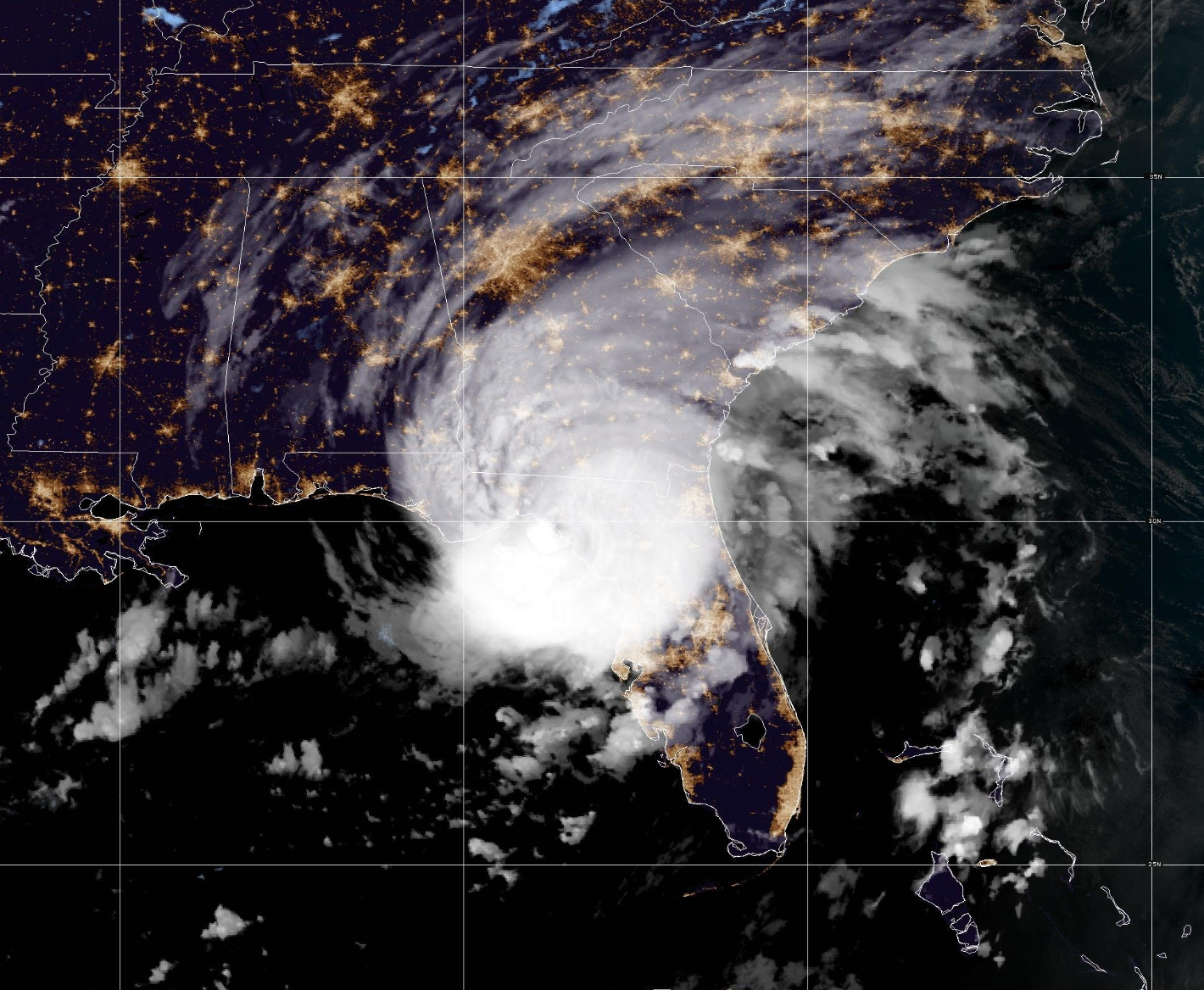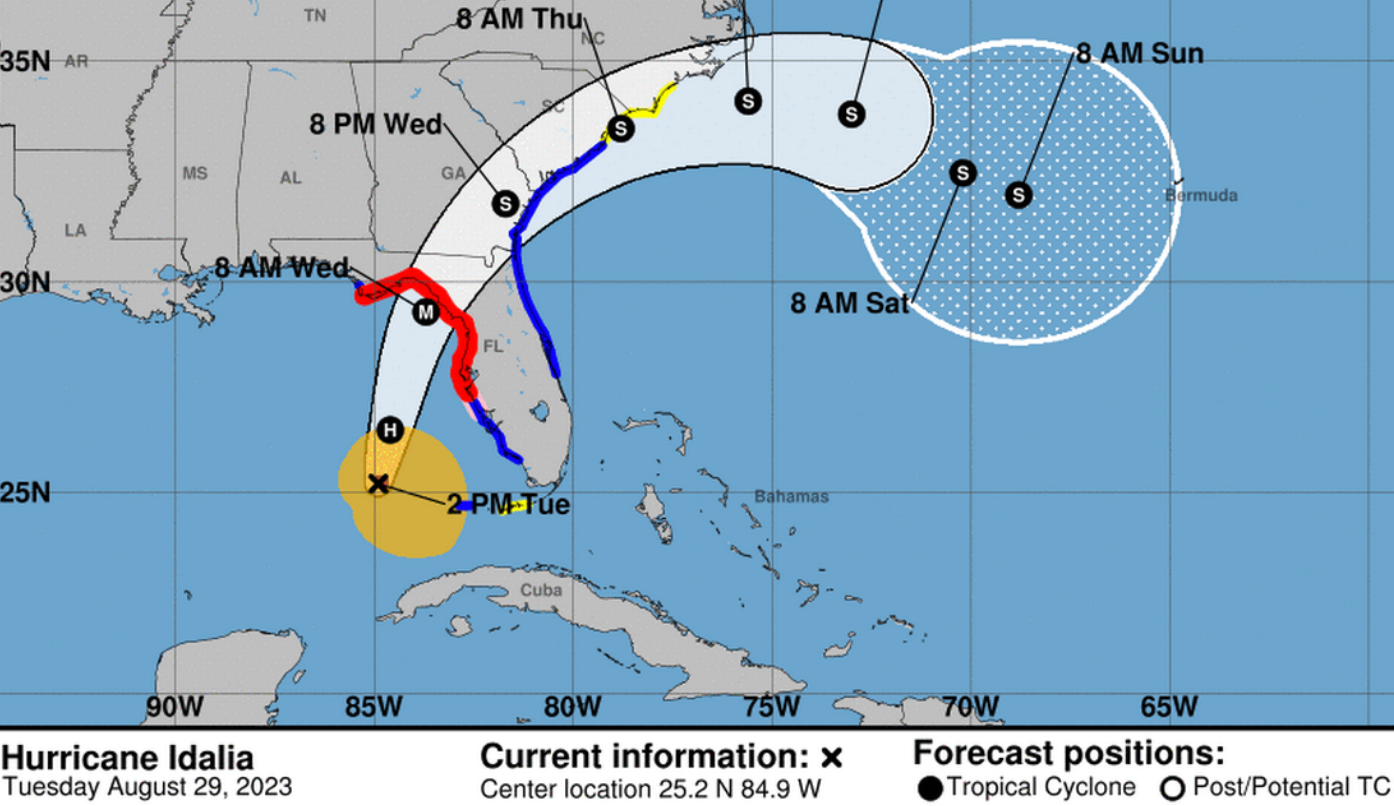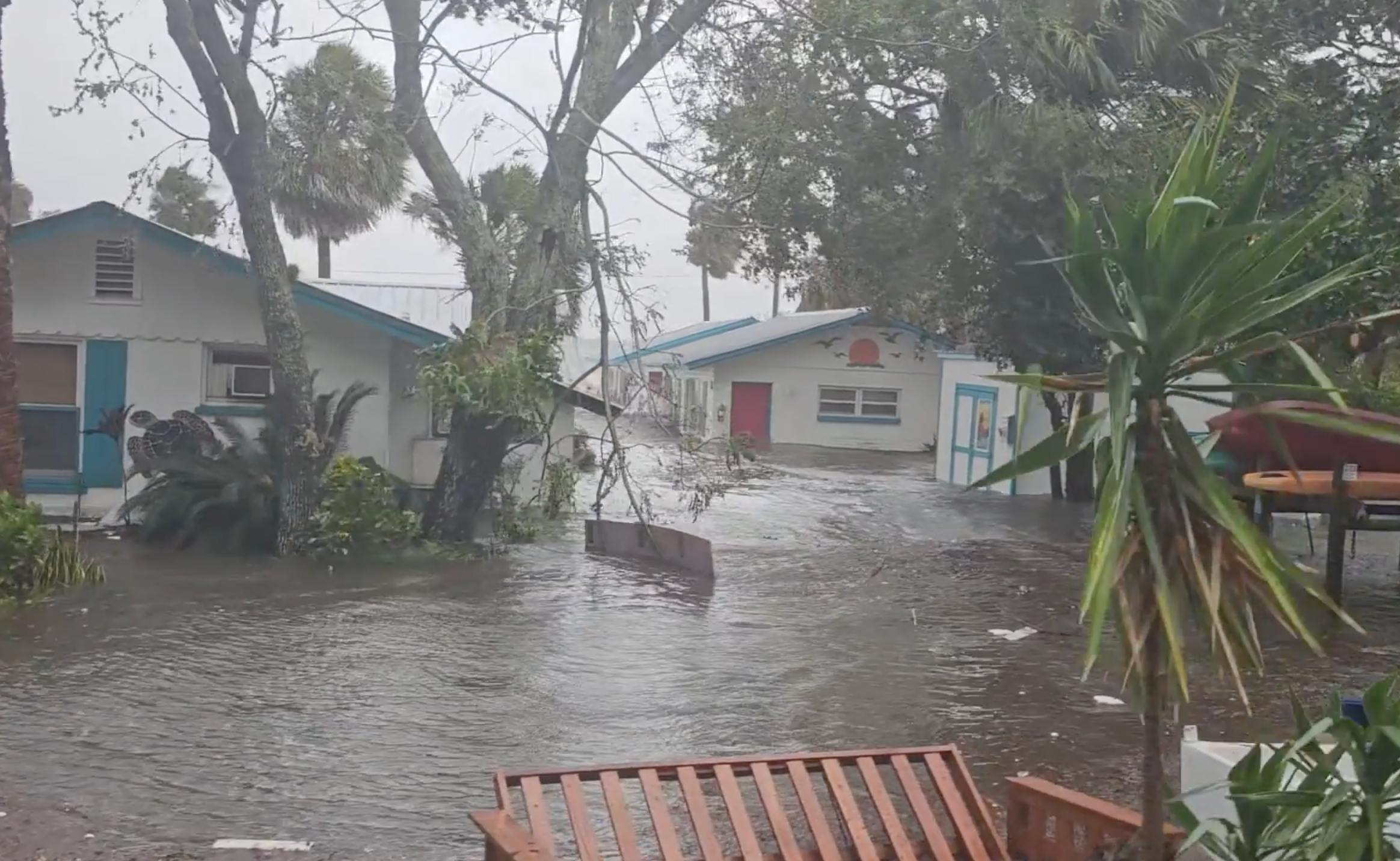Hurricane Idalia makes landfall in Florida with ‘catastrophic storm surge’
Two men killed in separate vehicle crashes, Florida Highway Patrol reports
Your support helps us to tell the story
This election is still a dead heat, according to most polls. In a fight with such wafer-thin margins, we need reporters on the ground talking to the people Trump and Harris are courting. Your support allows us to keep sending journalists to the story.
The Independent is trusted by 27 million Americans from across the entire political spectrum every month. Unlike many other quality news outlets, we choose not to lock you out of our reporting and analysis with paywalls. But quality journalism must still be paid for.
Help us keep bring these critical stories to light. Your support makes all the difference.
Hurricane Idalia made landfall as a Category 3 on Wednesday morning bringing “catastrophic storm surge” to parts of Florida.
The hurricane slammed into the Big Bend area, near Keaton Beach, just before 8am (Eastern Time) with 125mph winds and warnings of up to 15ft of storm surge.
Two men were killed in separate vehicle crashes during heavy rainfall, Florida Highway Patrol reported on Wednesday. A 59-year-old man died in Gainesville after his pickup truck hit trees during “extremely rainy conditions”. A 40-year-old man in Spring Hill lost control of his truck during the severe conditions and hit a tree.
A third man was killed in Georgia, according to the Lowndes County Sheriff’s Office, as he attempted to dismantle a fallen tree.
Idalia rapidly intensified to a Category 4 hurricane overnight before being downgraded as it reached Florida’s west coast where thousands of residents had been ordered to evacuate.
The hurricane was eventually downgraded into a tropical storm, though officials at the National Weather Service warned on Wednesday evening that the weather system could still bring “life-threatening” storm surge to coastal areas in the Carolinas.
Authorities are now in search-and-rescue mode for those who had failed to heed evacuation warnings.
Along the Gulf coastline, homes were underwater up to their rooflines and some structures, boats and docks were being swept away by the power of the storm surge.
Away from the coast, authories warned that high levels of rainfall could increase the chance of inland flooding.
Idalia’s impacts were being felt in areas devastated by Hurricane Ian less than a year ago such as Fort Myers Beach and Sanibel Island. Ian killed 150 people and damaged 52,000 structures.
At one point, more than 250,000 customers were left without power in Florida and more than 100,000 in Georgia as the powerful winds snapped utility lines. Florida governor Ron DeSantis’s press conference in Tallahassee was hit by a power cut as Idalia came ashore.
President Joe Biden called Mr DeSantis to let him know federal support will be available to deal with destruction from Idalia, according to the Federal Emergency Management Agency.

“Hurricane Idalia will likely be an unprecedented event for many locations in the Florida Big Bend. Looking back through recorded history, NO major hurricanes have ever moved through the Apalachee Bay. When you try to compare this storm to others, DON’T. No one has seen this,” NWS Tallahassee office warned as the storm approached the state.
Evacuation notices were issued in at least 21 counties in western and central Florida with mandatory orders in places. Some 46 Florida counties are under a state of emergency.

Tolls were waived on Florida highways to allow residents to quickly evacuate. Some 5,000 people were in Red Cross shelters across the state.
More than 30,000 utility workers were gathering to make repairs to the downed power lines, supported by the Army Corps of Engineers.
Tampa General Hospital, the city’s only Level 1 trauma centre located on an island in Hillsborough Bay, was temporarily surrounded by “Aquafences” on Tuesday in attempts to keep out the predicted storm surge.
In coastal Tarpon Springs, a community northwest of Tampa, 60 patients were evacuated from a hospital out of concerns of high water levels.
Hundreds of flights were cancelled at Tampa International airport while Walt Disney World Resort in Orlando said that it was operating under normal conditions but “closely monitoring” the storm. The company said it was closing the Typhoon Lagoon water park and minature golf areas due to the inclement weather on Wednesday.

While most weather models projected that Idalia was moving northeast and out into the Atlantic in the coming days, the Global Forecasting System, a US federal project, indicated that there was an outside chance that the hurricane could circle back and strike Florida for a second time early next week, but with much less power. Such looping is considered highly unusual for tropical storms but is not unprecedented.
Idalia may be the first major storm to hit Florida this hurricane season but it joins a long list of disasters in the United States and globally which are being amplified by the climate crisis.
Ocean temperatures have reached unprecedented highs this summer including in the Gulf of Mexico. Warming oceans fuel stronger tropical cyclones that bring more heavy rainfall and higher storm surge when they make landfall, according to Climate Central.
Idalia has already deluged western Cuba, particularly the province of Pinar del Rio which is also still recovering from Hurricane Ian last year. More than 10,000 people evacuated as up to four inches (10cm) of rain fell, leaving half the province without power.
The Atlantic hurricane season, which runs from 1 June to 30 November, is forecast to be above average this year.
This is a developing news story and this article is being updated




Join our commenting forum
Join thought-provoking conversations, follow other Independent readers and see their replies
Comments